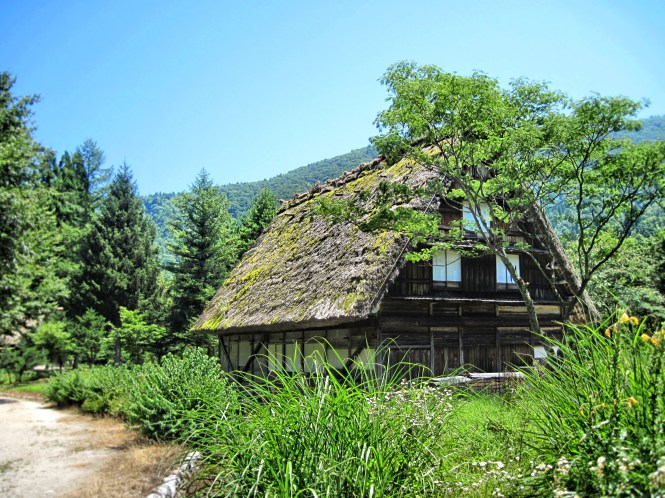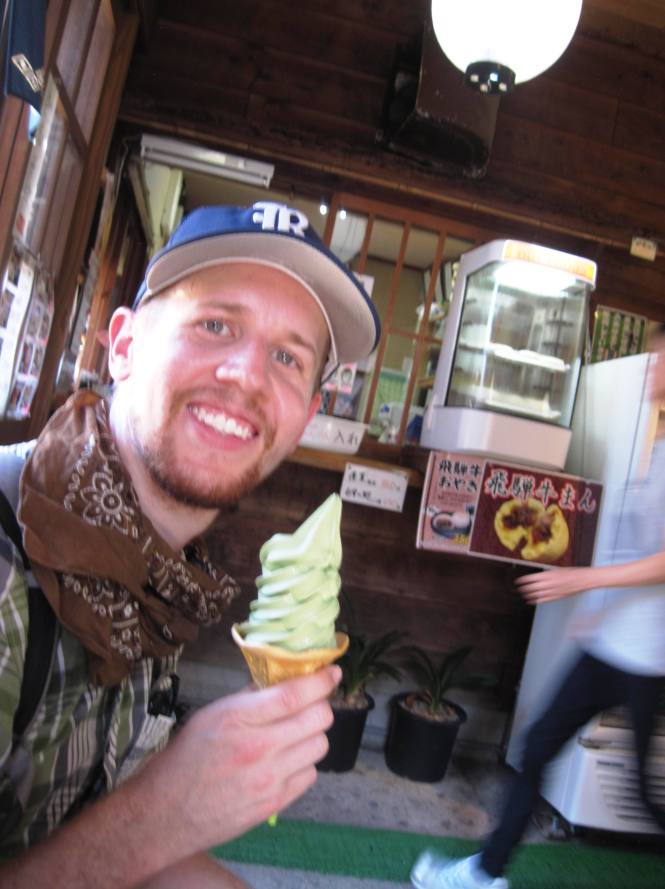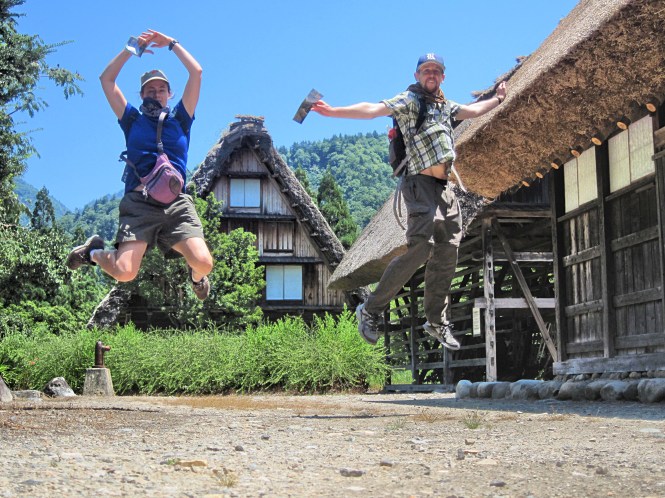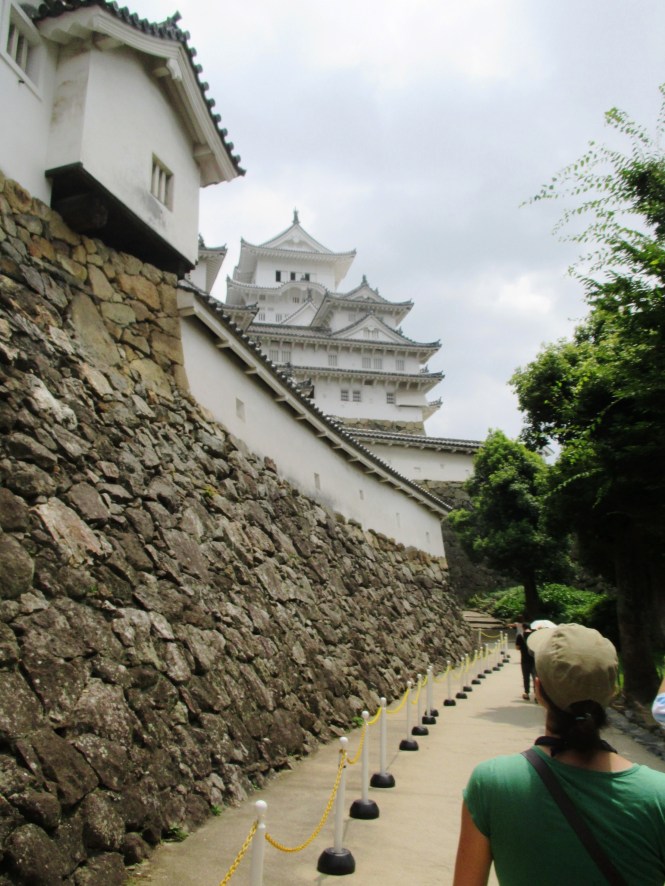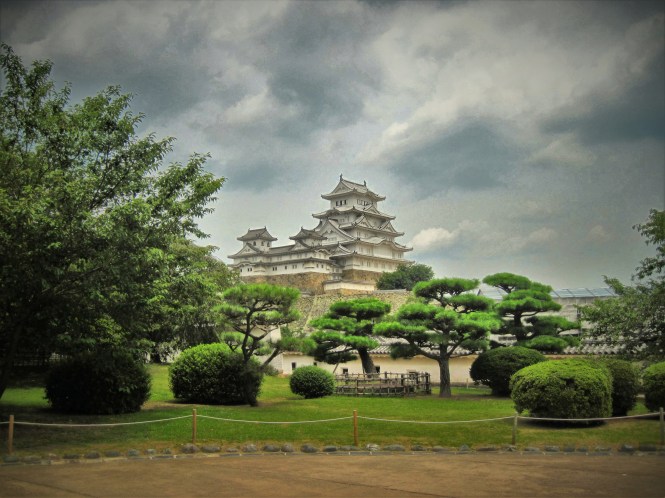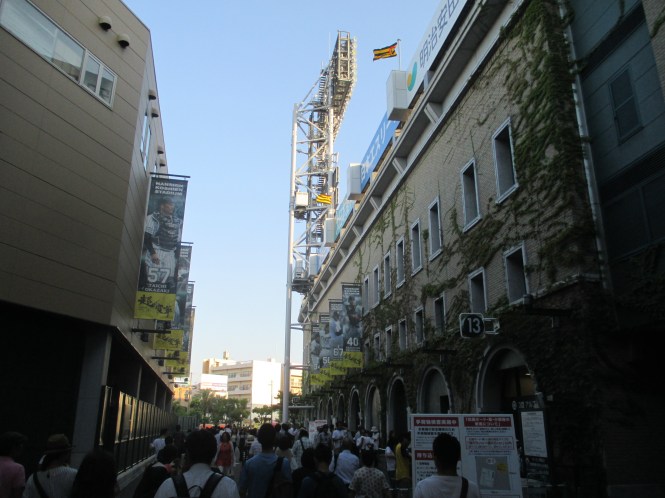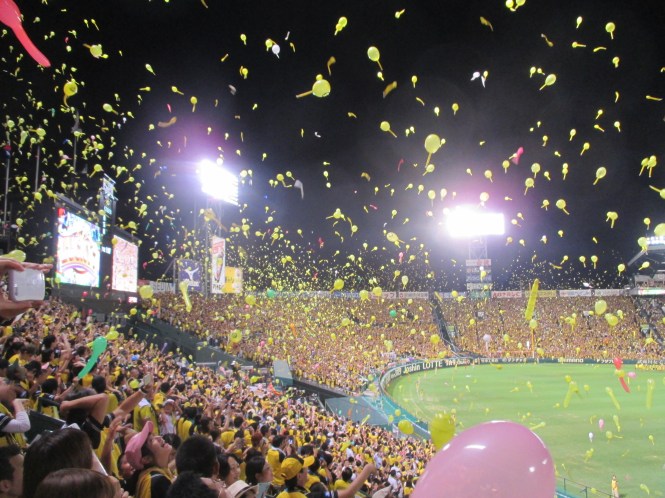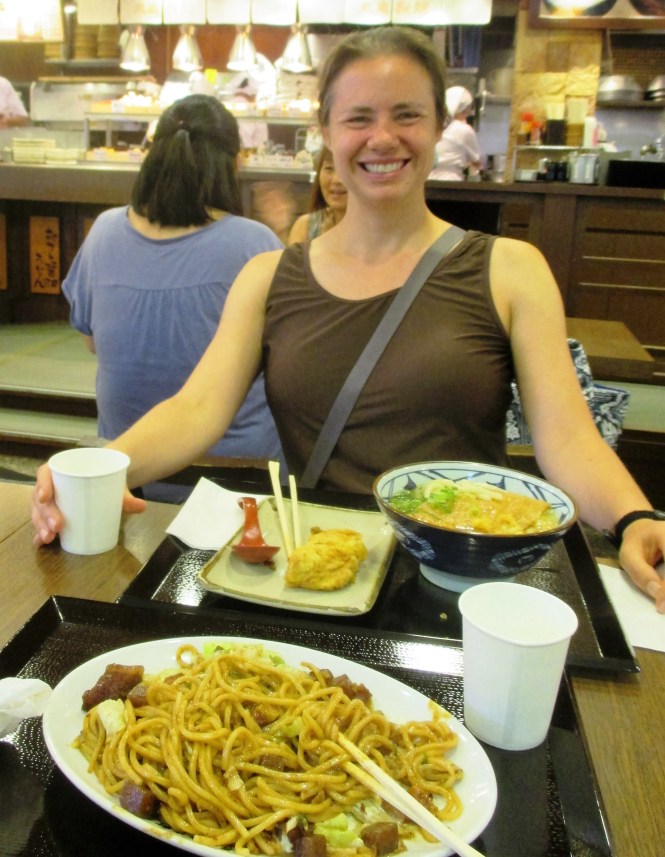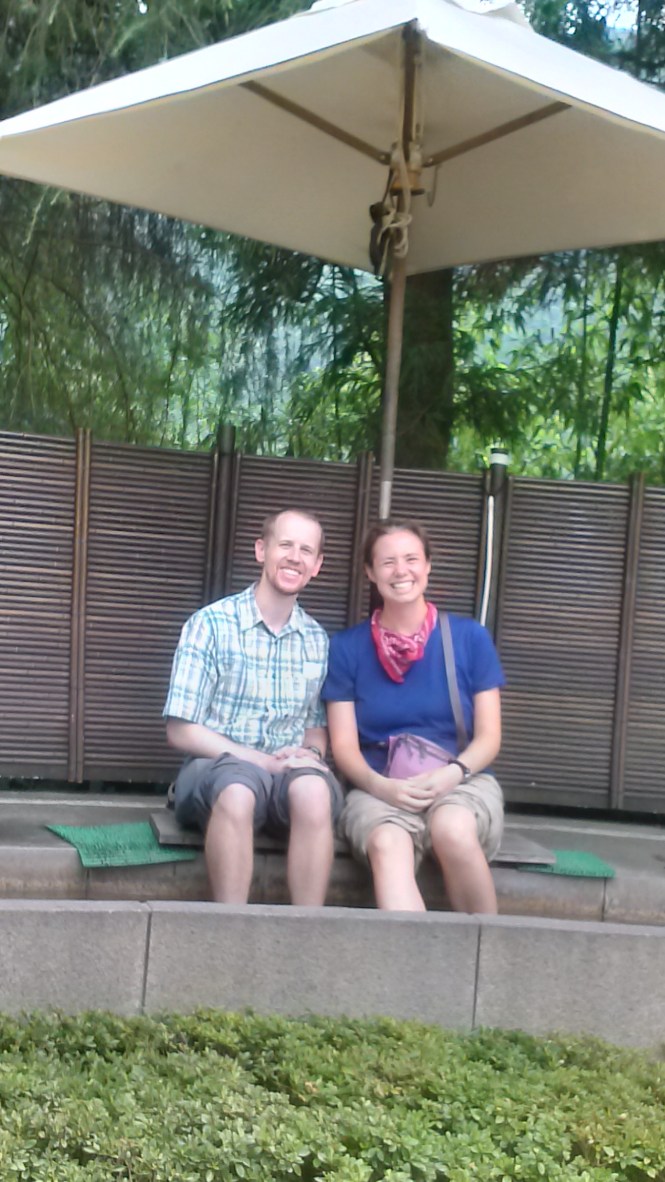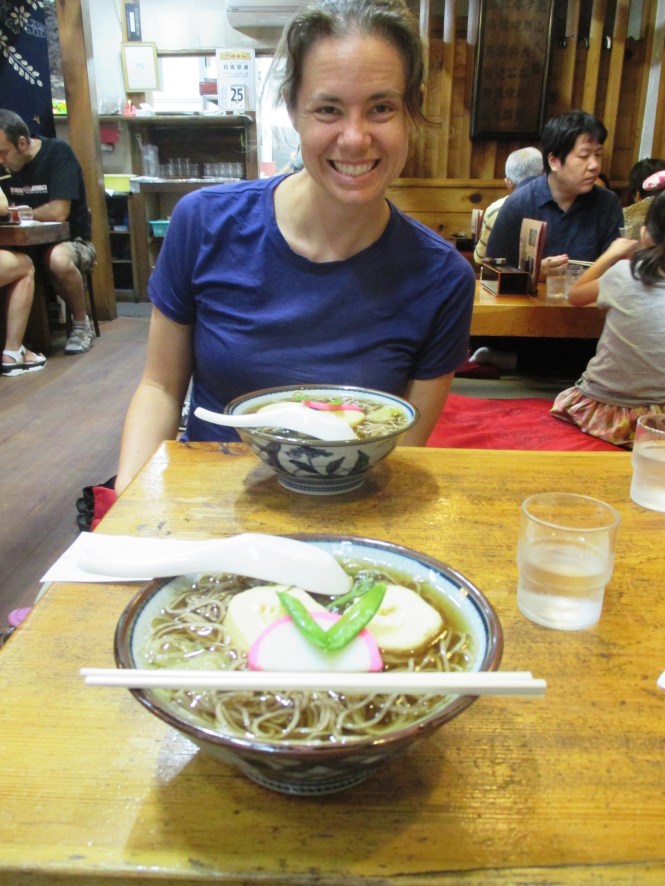The city of Kyoto was the capital of Japan and the residence of its emperor for over 1000 years. Many shines, temples and other historical sites from this era still remain, so there were a lot of things we wanted to see and do! We split our days by geographic region of the city to make it easier for us to see as much as possible. We were fortunate to stay in the Gion area of the Kyoto which made several of the sites walkable.
What We Did
East Kyoto
Our first day was spent in the Eastern part of the Kyoto. The initial sites were within walking distance of our Airbnb in Gion.
Kiyomizu-dera
This temple, the name meaning Pure Water Temple, was built on the site of the Otowa Waterfall. The waterfall still flows here but it has been divided into three separate streams. Each stream is supposed to bring a different benefit to your life: one for longevity, one for success at school, and the final for a fortunate love life. The lines were incredibly long when we visited, so we decided to skip the traditional sipping from the streams. We felt OK about it because we had already eaten our black eggs in Hakone (for long life), have already graduated from school, and were feeling pretty lucky in our love life already (yay honeymoon!)

The temple’s most impressive feature was a large wooden platform which extended from the main hall. It was high above the hillside below and offered fantastic views of the city of Kyoto.
Another part of the temple we enjoyed was the Tainai-Meguri, a small attraction underneath one of the main temples near the entrance. We had to pay a small extra fee which allowed us to go down the stairs into a pitch black area. The only way you knew where to go was by holding onto a banister shaped like prayer beads. At the end of the tunnel, you reached an amazing spinning stone, which you could spin to grant yourself a wish. It was a somewhat mysterious and really fun experience!
Finally, we also liked the Jishu Shrine which was dedicated to the deity of love and matchmaking. We read about two stones in front of the shrine which are placed 18 meters apart. It was said that if you could walk from one to the other with your eyes closed, it would you bring you luck in love. It was so crowded, we skipped that one too. We thought about buying a good luck charm, but settled on just taking a picture of it instead!

Right near Eric’s head, you can see one of the two stones people tried to walk between!
Streets of Higayashima

Heading down from Kiyomizu-dera temple toward Higayashima
On our way out of the Kiyomizu-dera temple, we made sure to follow the Lonely Planet walking tour of Higayashima which is one of Kyoto’s well-preserved historic districts. It is full of small restaurants and shops. We did a bit of shopping while we enjoyed the traditional narrow lanes and wooden buildings.
We also particularly enjoyed watching many of the people strolling around in traditional kimonos. Throughout the city, there are many kimono rental shops and it seemed as if many people took advantage of it to make the most of the photo opportunities in these historic streets!

It was REALLY hot, so we felt for all the tourists in the their hot kimonos. Luckily, there are random vending machines everywhere in Japan!
Kodai-ji Zen
We continued our walk to the Kodai-ji Zen Buddhist Temple. We were particularly impressed by the amazing rock gardens. At this temple, they consisted of raked gravel which looked like rivers and hills.
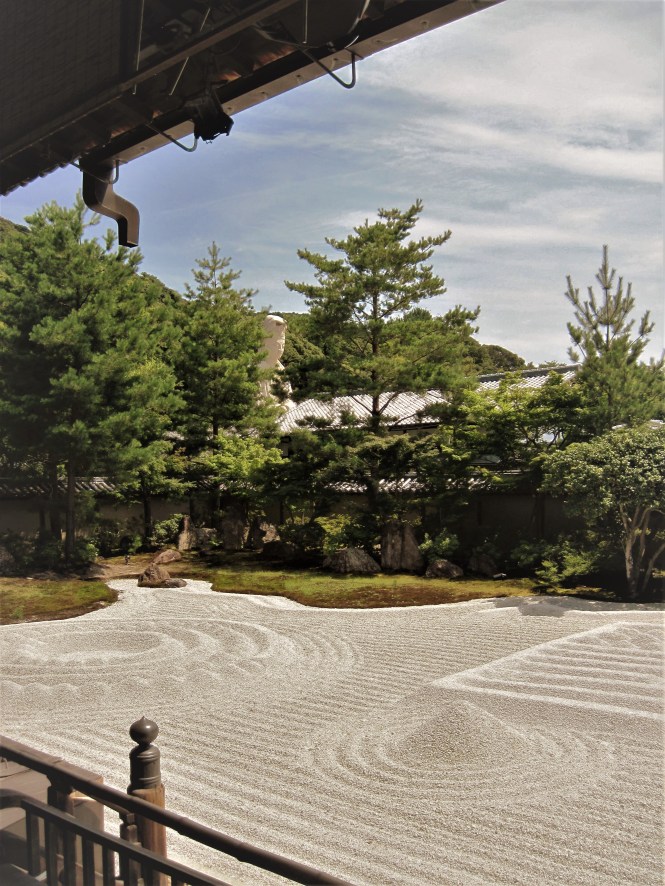
We also loved heading up the hill behind the temple, enjoying the beautiful buildings, lovely gardens, quaint teahouses, and finally an expansive view over the city.
Ginkaku-ji, the Silver Pavilion
After returning to our Airbnb for a quick break from the heat, we took the 100 bus out to the Ginkaku-ji. We thought they had a fun system at the bus stop to let passengers know when the next buses were approaching. A little picture of a bus would appear in consecutive circles as it got closer to your stop.
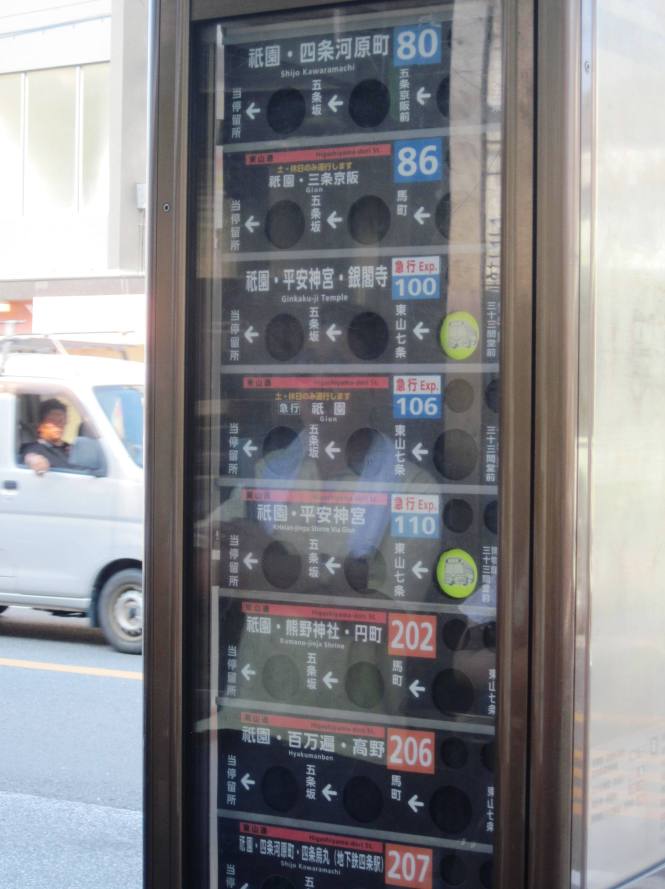
Despite being called the Silver Pavilion, Ginkaku-ji actually has no silver coloring. It was named this way to differentiate it from the Golden Pavilion in which it was modeled after. The structures of the Silver Pavilion were quite nice, but what really struck us was the beauty of the gardens.
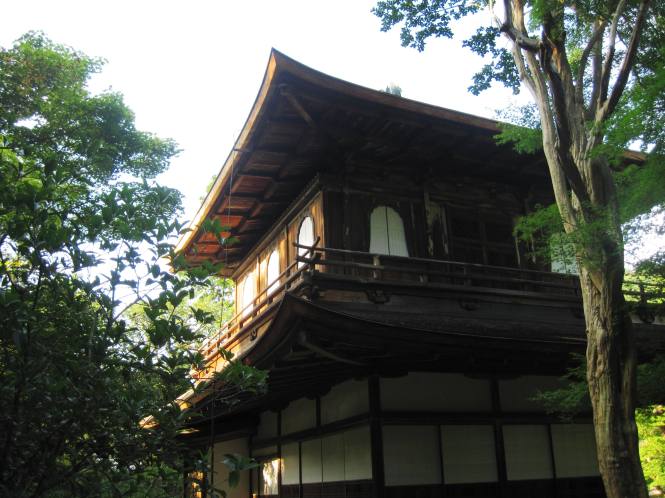
We visited at the end of the day which made for some very nice late afternoon sun. The shadows made viewing the gravel decorations a more interesting experience.
Also, the gardens were amazingly lush and green. Our favorite were the moss gardens which looked so springy and light that we could almost imagine laying down for a nice nap. Della kept thinking she was going to see fauns or nymphs emerging from the shadowy groves. It was so lovely, we didn’t really want to leave!
West Kyoto
We spent one full day in Western Kyoto. We walked to Gion intersection near our Airbnb and caught the 12 bus all the way to Kinkaku-ji. The ride was about 50 minutes, so we were quite pleased that we were able to get seats on the bus (many others had been standing room only)!
Kinkaku-ji (Golden Pavilion)
This time, the name really meant something! The main attraction here is the Zen temple whose top two floors are completely covered in gold leaf.
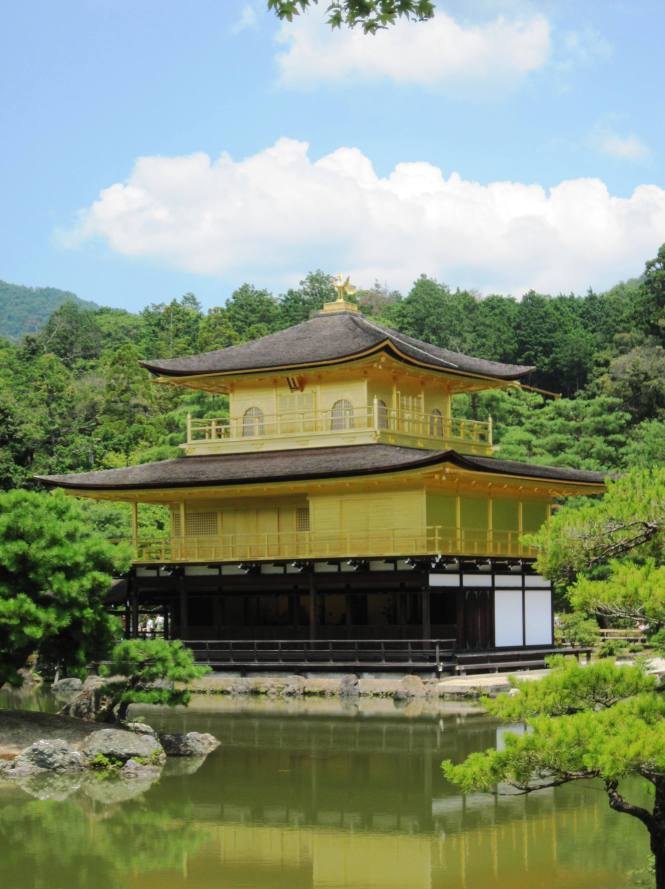
The temple sits overlooking a large pond which makes for some lovely photo opportunities.
Unfortunately, most people are thinking the same thing which means it was quite crowded and we had to jostle for position to get the good shots.
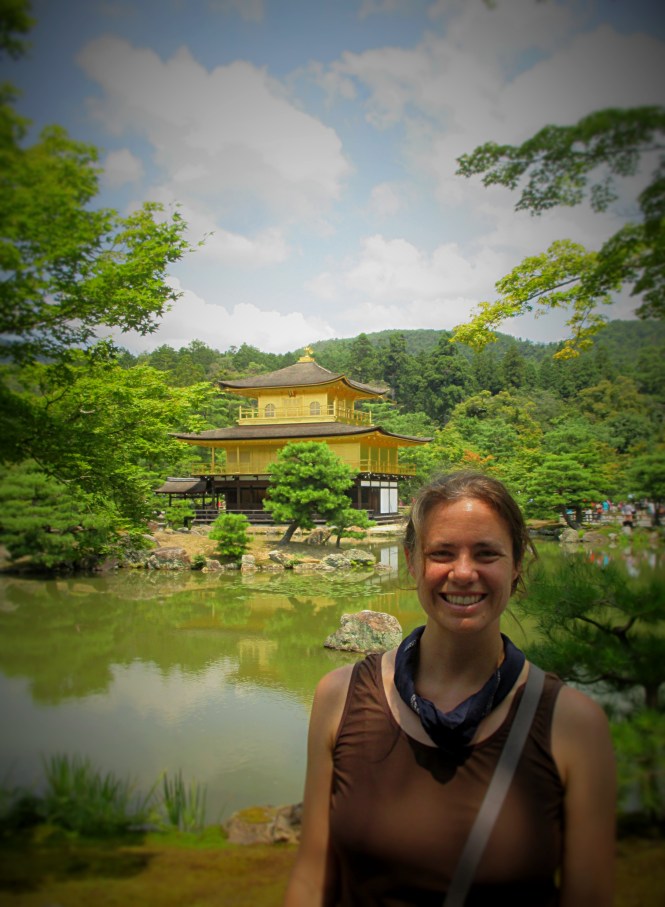
However, the path does lead the crowd around the temple so that you are able to view it in its beauty from all sides.
While the main attraction was quite amazing, the rest of the grounds were a little disappointing, especially compared to the gardens of Ginkaku-ji. We had expected to spend at least a couple of hours here, but were actually quite finished after only one.
Ryoan-ji
We walked to our next stop, a Temple which is home to Japan’s most famous rock garden, Ryoan-ji. We enjoyed seeing the rock garden as well as the Hojo, the head priest’s former residence. However, we were a little underwhelmed. Perhaps it was the fantastic heat, the large crowd, and/or the starkness of the rock garden, but we didn’t have a super Zen experience and were anxious to move on. This was another spot where we spent considerable less time than we had budgeted.
Bamboo Grove
Next we headed to Arayashima, excited to see one of the things we had been most looking forward to in our trip! In order to get there we caught the Randen Trolley cars and had only one (free) transfer. The Arayashima train station was hopping and had a beer garden! We decided to try a beer mixed with lychee juice!
Afterwards, we walked towards the Bamboo Grove. Every time we have looked at pictures of things to do in Japan, this was one of the top of the things on the list! As expected, the path lined with huge bamboo stalks was quite crowded. We were a little disappointed at first because the bamboo wasn’t as dense and it wasn’t creating the mystic atmosphere we were expecting.

It turned out that we were just getting started. As we continued to meander on the path, the bamboo forest got denser and taller. The light flickering down between the swaying stalks created a shimmering, otherworldly feel.
At one point, we were surprised as a taxi drove by us down the narrow lane. We had been under the impression that it was pedestrian only.
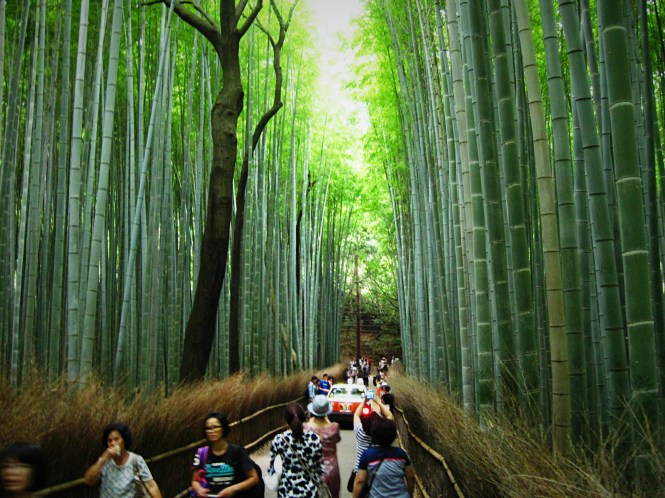
Despite the crowds of people, we were still able to truly enjoy the atmosphere!

Okochi Sanso Villa
We had read that we needed to visit this villa of a former actor which was right behind the bamboo groves. The large grounds are full of beautiful gardens with flowers, Japanese maples, and moss.
There is also a small teahouse where you can enjoy tea and sweets as part of the entrance price.

It was here that the weather first failed us a bit. Just as we were entering the villa, a heavy rainstorm came through. At first we were disappointed, but then we were able to enjoy the special beauty created by the rain! Especially when the sun began to peek through the clouds at the same time!
The gardens took us up into the hills which made for some lovely views over the city.

Gion
Geisha Spotting by Night
As we mentioned before, we were quite fortunate to be staying in Gion, the famous geisha district of Kyoto. This meant that every evening we could go out and explore the area, enjoying the lovely cobbled streets and traditional wooden buildings and teahouses. We even caught a few glimpses of Geisha at work!

Gion by night

Gion by night

The lanterns would identify teahouses

A glimpse of a geisha with a client?

The geisha seemed to be in the middle of a photoshoot
Kimono Rental
Della had been really curious about the beautiful kimonos she saw everywhere. In addition to noticing how lovely they were, we had both been reading “Memoirs of a Geisha” which had some interesting description of the parts that make up a kimono and how complicated they were to put on. For that reason, Della was really tempted when she saw some of the kimono rental shops that lined the streets of Kyoto. However, the idea of renting one for the day and trying to wear it and the awkward sandals for a day of hot sightseeing was not appealing at all.
So, when we saw that some of the places offered a slightly cheaper “photo” rate, we decided to do it. This allowed Della to be dressed in a traditional kimono and then pose for photos for awhile.

While the photos were fun, the most interesting part was seeing how many pieces went into wearing a kimono. First there was an under-robe or shawl which included the white collar. That was tied tight around the waist with stretchy fabric. Next, there was padding added around the waist in the form of rolled up towels. This was also tied on. On top of the padding, a hard belt-like piece was added and tied on. Only then could we actually put on the kimono. The kimono itself has to be wrapped, tied, and clipped in order for it to hang just perfect at the right length. Finally, the obi belt was wrapped around and tied in a bow in the back which was a work of art itself. The look was finished with socks with a separate big toe and high wooden sandals. She also got to pose with a lovely umbrella and small bag.

All the pieces under the kimono!
Hassaku
We came upon this completely by accident, but we are so incredibly happy that we did. It was August 1, and we had planned to do a day trip from Kyoto to Nara. On our way to the subway, we made our way through the lovely geisha district of Gion. We had explored this area by night already, but definitely enjoyed the wood-slatted buildings by day.

Right as we were about to hit the main street, we noticed a huge gaggle of tourist photographers sitting outside a teahouse. We were confused, wondering what they were waiting to see. We paused, knowing that if they were waiting, there must be something interesting or photogenic about to happen.
We waited, and we waited… The heat was starting to really get to us and we finally decided to head out. But right as we turned to leave, we ran into a kindly Japanese man. He attempted to start a conversation with us, though his English was very limited. What we did understand was that he was expecting to see maiko. We had recently learned that this was the word for apprentice geisha. Now, we really wanted to stay. We thought he told us that they were going to dance…
So, we waited… and waited some more. We were eventually rewarded by seeing several small groups of maiko walking up and down the street.
Later, we did a bit more research and learned that Aug 1 is a special day in Gion called Hassaku. Apparently, the geisha and maiko make their rounds of all the teahouses in the district in order to to thank them for their patronage throughout the year. We were so thrilled we could to witness this!
Gion Corner
As we were walking around Gion, we kept seeing flyers for a show at Gion Corner. Despite the fact that it may be a bit overpriced, we decided to go for it. The show was an hour long and made an attempt to introduce many aspects of traditional Japanese culture to the viewers.
We saw a traditional tea ceremony accompanied by Koto music and flower arrangement,
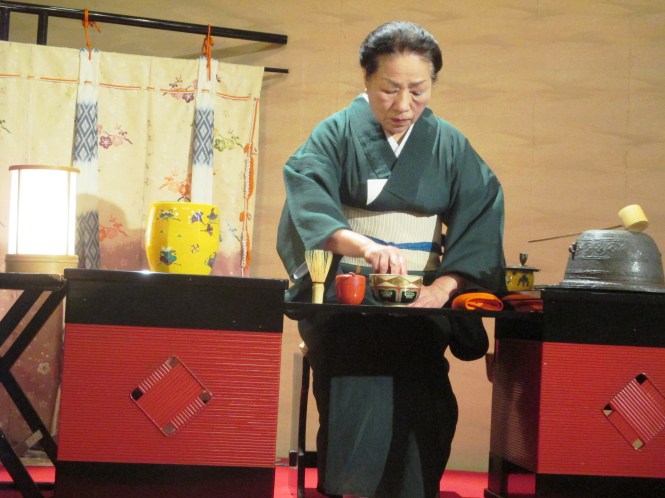
Gagaku (traditional Court music and dance),

Kyogen, an ancient comic play, which was silly but fun since they had translated the story in the program,
Kyomai (geisha maiko dances),
and Bunraku (a puppet play excerpt).

It was definitely a full hour!
What We Ate
While we didn’t eat a lot of sushi (Della doesn’t love fish), we certainly ate a lot of noodles!
We ate Ramen in Gion, Eric getting the “specialty” and Della getting Gion black ramen with sesame seeds. We also enjoyed a lot of delicious Sake.
We enjoyed a street food type meal at the Arayashima Station which included some takoyaki balls and a fried corn and edamame mixture.
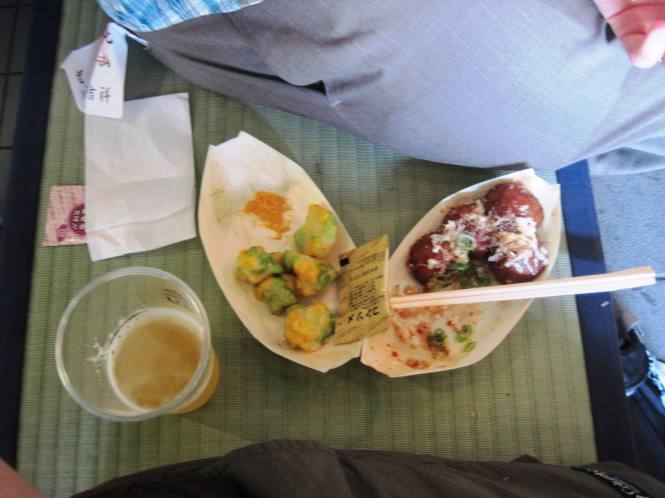
On another evening, we ate dinner at a place that specialized in udon. Both of us got curry udon with sweet tofu – Della added tempura chicken and Eric a special cheese that was like cream cheese. We each got a highball which is plum wine mixed with soda.
Basically – you can never have too many noodles!

Getting There (the hard way)
As we mentioned in our post about the Hanshin Tigers Baseball Game, we had a bit of an experience arriving in Kyoto. Sometimes, when traveling, small things just compound to add up to a mess! The trip started fine: we caught the shinkansen from Odawara and had a pleasant 2 hour ride to Kyoto Station. We knew we had only a few hours before we needed to be back at the station to head to Osaka for the baseball game. But, we thought we would have plenty of time.
Our Airbnb had indicated that we needed to take the 206 bus toward the Kitaoji Bus Terminal. We headed out of the train station and immediately saw a 206 bus waiting that listed Kitaoji as a final destination. We ran and got on just as the doors were closing, thinking how lucky we were that we weren’t going to have to wait! The bus was crowded and we knew we needed to head about 9 stops to Gion. The 9 stops came, relatively slowly as we were in the midst of terrible afternoon traffic, but we didn’t see the sign for Gion. We were getting really hot and tired standing with our big bags. Finally, at one point, Della was able to maneuver in front of the city map displayed on the bus. We could tell we were on the right bus, headed north… But, all of a sudden, we realized that the bus went in a looped route. We were indeed headed towards Kitaoji Bus Terminal, we just had gotten on the bus that went on the west side of the loop instead of the east. This would seem fine, except that we realized in the approximately 35 minutes we had already been on the bus, we had only traveled a little less than a quarter of the loop. Based on that, we estimated we wouldn’t reach the Gion stop for over an hour. Oops!
All we can say is thank goodness for transit directions on Google Maps and our T-Mobile international data plan! We were able to recalculate and take a different bus which took us across town. We did have to wait quite a long time and then the bus took forever as it too had to fight through traffic. We finally arrived at Gion, but had to walk close to 10 blocks in the heat with our bags (instead of the 2 we would have had to walk if we had taken the right bus in the first place).
All in all, what should have taken us about 20 minutes took us about 1.5 hours instead. When we arrived at the apartment, we threw our stuff down, turned around and headed back to the bus so we could make it back to the train station in order to get to the baseball game on time! Frustrating!
Della’s family has always had a rule related to travel: When you buy a train ticket, always make sure to ask which train station it leaves from… We found out the hard way that there may be secret train stations in cities that you don’t know about. The two of us now have another rule to add: Always make sure to double check if the bus you’re taking goes in a loop, and make sure you check the intermediate stops on the bus sign!
Final Thoughts
There is so much to see in Kyoto that we are definitely glad we budgeted as much time as we did – and we could have spent even more time! It was crowded and hot though, so we really appreciated having a place to stay that was both easy to get to for a mid-afternoon break and was a good base for exploring at night when it was cooler and calmer. Kyoto provides a great look at historical Japanese culture, so any visit to Japan should include a stop here.





























